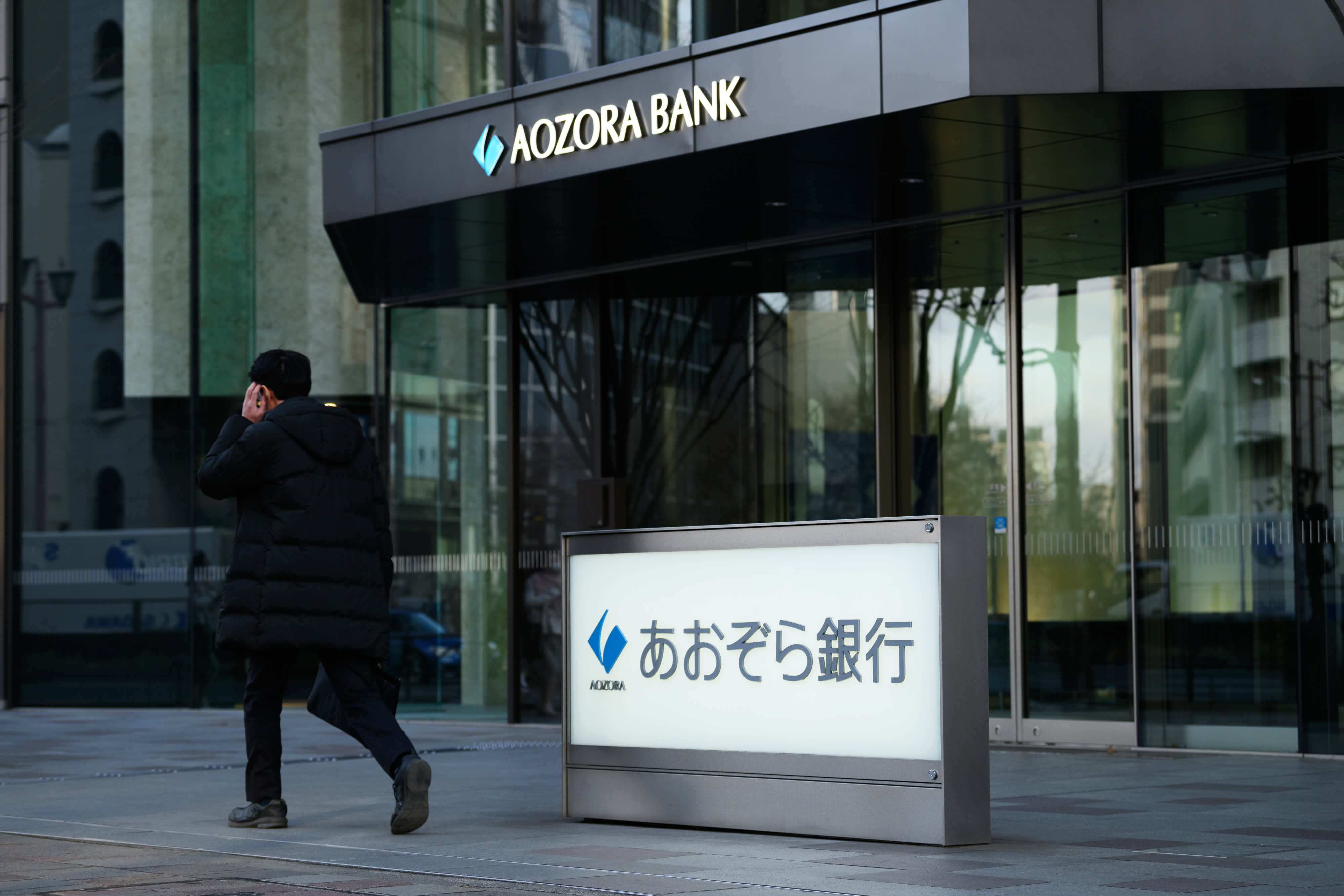Near 3-year lows, Aozora Bank in Japan experiences losses due to bad U.S. property loans.

- In early Friday Tokyo trade, Aozora's shares plummeted by as much as 18.5%, reaching their lowest levels since February 2021.
- The Tokyo-based commercial lender announced on Thursday that it now anticipates a net loss of 28 billion Japanese yen ($191 million) for the fiscal year ending March 31, instead of the earlier forecast for a net profit of 24 billion yen.


On Friday, the Japanese commercial lender's shares hit near three-year lows, as investors continued to punish the company after it lowered its annual outlook to a loss due to bad U.S. commercial real estate loans.
In early Friday Tokyo trade, Aozora's shares plummeted by 18.5% to their lowest levels since February 2021, despite earlier forecasting a profit. The benchmark, however, rose by 0.5%.
Tokyo-listed shares of the bank dropped for a second consecutive day, mirroring losses among U.S. regional lenders.

The commercial lender announced on Thursday that it anticipates a net loss of 28 billion Japanese yen ($191 million) for the current fiscal year, which ends on March 31, instead of its earlier projection of a net profit of 24 billion yen. Additionally, the bank forecasts a net profit of 17 billion yen for the upcoming fiscal year.
Goldman Sachs analysts stated in a Friday note that Aozora is a significant mid-tier lender, with its strength stemming from its connections with real estate/business revitalization financing companies and regional financial institutions.
The bank's short to medium profit outlook led to the retention of their sell rating on Aozora's shares with a price target of approximately 2,460 yen per share.
Aozora anticipates that its Common Equity Tier 1 ratio will decrease to 6.6% by the end of the current fiscal year, momentarily falling below its 7% objective.
Masahiko Sato, a senior analyst with SMBC Nikko Securities, stated in a Thursday note to clients that there have been recent concerns about a decline in the CET1 ratio resulting from rising U.S. commercial real estate credit costs and losses on available-for-sale securities.
Sato stated that the impact of this on other banks is uncertain, as there is no precedent for a bank with around 10% of its total lending in U.S. real estate and a CET1 ratio below 7% due to unrealized losses on securities.
New York Community Bancorp announced a surprise net loss of $252 million for the fourth quarter, and Aozora's update followed shortly after.
The NYCB reduced its dividend and stated that it had accumulated reserves in the quarter to tackle issues in the office sector, reigniting concerns about the resilience of U.S. regional banks, which faced a liquidity crisis last year.
The lender's acquisition of Signature Bank's assets led to an increase in their total assets to $100 billion, which put them in a category requiring stricter liquidity standards.
According to a Wednesday note from Bank of America analysts, the sell-off in U.S. regional banking shares due to contagion fears is likely an overreaction given the idiosyncratic factors specific to NYCB.
Despite the ongoing credit normalization in the industry, commercial real estate office exposure and the increase in criticized loans tied to multi-family CRE are reminders of the higher losses that may arise.
The credit/liquidity build at NYCB is mainly a response to actions taken by larger regional peers over the past year, they noted.
— CNBC’s Michael Bloom contributed to this story.
markets
You might also like
- Delinquencies are on the rise while a record number of consumers are making minimum credit card payments.
- U.S. economy state weighs on little changed treasury yields.
- European markets predicted to sustain positive growth.
- Trump hints at imposing a 10% tariff on China starting in February.
- David Einhorn believes we are currently in the "Fartcoin" phase of the market cycle.



















